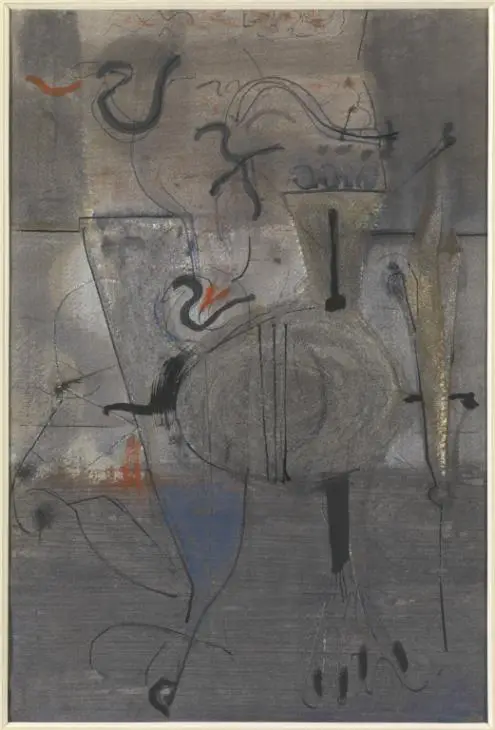Untitled, circa 1944
Untitled Circa 1944 is a creation by Rothko between 1944 and 1945. It is an artistic piece of gouache and ink on paper, with a touch of pen, pencil, brush, graphite, tempera, and watercolour. The style used is that of surrealism. This painting is one of the few watercolour art creations that Rothko created during a critical time in his work.
The Technique
On a foundation of grey-blue and grey washes, he employed black ink to map out residually figurative suggestive forms. An art historian, Bonnie Clearwater, has identified Rothko's technique of watercolour use. Her general insights closely match this piece:
Rothko would apply the aquarelle and gouache using generous soft-bristled brushes. He returned with black ink to define shapes or manipulate automatic lines before the paint was dry. The ink would sometimes bleed when introduced if the paint was still wet in some regions. This would lead to the black explosions that are spotted in some of his works. Lastly, he would sometimes scrape and expose the paper underneath the pigment with a razor blade, another sharp instrument or the back of a brush.
(Clearwater p.30, 1984)
Untitled demonstrates the influence of scratching and bleeding defined by Clearwater and the linear elements and preliminary washes. A blue surface additionally enlivens the painting in its bottom half, with red curls and smudges spread out thoughtfully throughout the composition.
The Message Depicted by Untitled Circa 1944
As with the aquarelles of Rothko, sometimes, the lack of a title eliminates any allusions associated with the shapes of this art piece. However, the elliptical at the middle range and the totemic vertical types is familiar to other aquarelles that endure this duration, including "Untitled" (Arcaic Seascape, Primeval Landscape) Circa 1944, (private collection). Larger canvases related to the technique, including Ritual I 1944 and private collection Anfam 1998, present more explicit images that help validate the Untitled's forms that largely originate from humanity.
The Possible Inspiration
This rapidly developing moment that Rothko shared with Adolph Gottlieb and Barnett Newman was short. Both Adolph and Barnett were American abstract artists who believed in a similar doctrine to Rothko: that art is an exploration adventure into the unknown world only for willing risk-takers. It was, however, a critical precedent in Rothko's subsequent biomorphic work, notably Untitled v. 1946–7 (Tate T04147), which showed that his aquarelle practice might result in a thinned use of oil. In addition, the composition and context expect the horizontal planes clustered vertically to typify the matured abstract works of Rothko.

